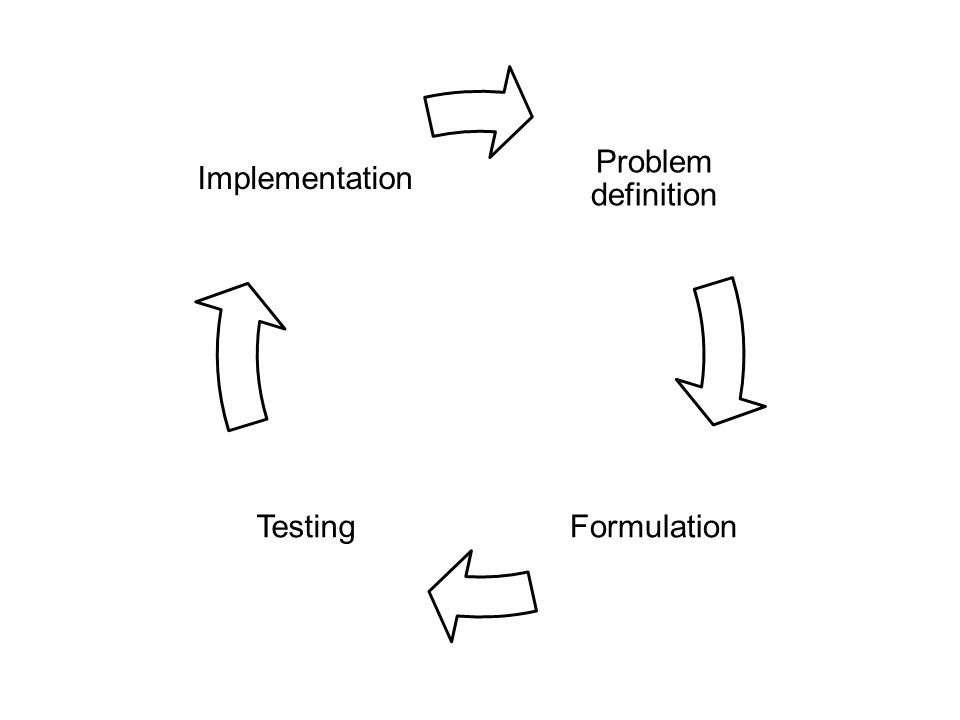8.3 How do we Create Models?
When describing the modeling process, experts have organized the main modeler activities using different arrangements. Although the ways of grouping the activities vary among authors and modeling traditions, it is possible to think on a four-stage modeling process as the one introduced in Figure 8.6. In general, all modeling traditions conceptualize modeling as an iterative process in which the decision maker thinks about the problem and develops models improving their way of thinking.

Figure 8.6 The Modeling Process
Defining the problem is probably the most important part of the process of developing models, particularly when working in public management and policy, given that different stakeholders will perceive the problem in different ways, and will have competing (and maybe conflicting) goals. The formulation stage involves choosing a modeling approach, defining on that basis a detailed structure of the problem and gathering the necessary data, both qualitative and quantitative, to produce the model and a recommendation. The testing stage (model behavior and model evaluation) involves the verification of the mechanics of the model, but also a series of probes for internal consistency. Many modeling techniques call for the use of sensitivity analysis to explore the robustness of models and their conclusions. For sure, model testing will involve assessments on how well the model serves different stakeholder goals within the policy system. Finally, the implementation stage (policy analysis and use) involves thinking on how to communicate with stakeholders about recommendations, but also in translating modeling insights into a plan for action.
Attribution
By Luis F. Luna-Reyes and Erika Martin, and licensed under CC BY-NC-SA 4.0.
